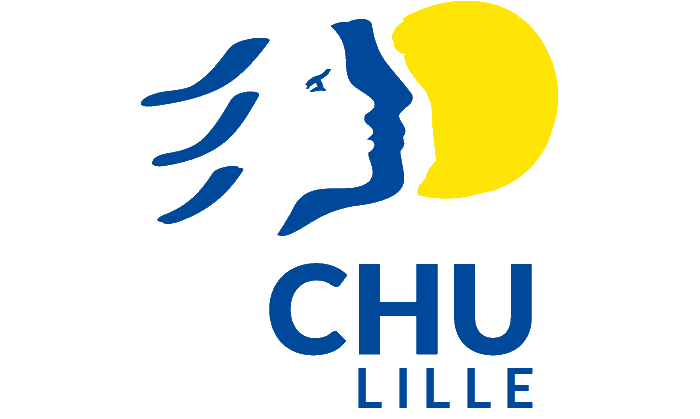-
Health and Nutrition
Impact of the chemical environment on health (IMPECS)
Research unit - ULR 4483
The scientific program of our laboratory aims to better understand the reactional complexity of lung tissues exposed to chemical compounds present in the air, to explain the inequalities of individuals with respect to these substances, to better understand the levels of risk and, consequently, to better predict and better prevent the impact of this environment on respiratory health.
Overall, our research project addresses two major challenges: (1) first, the identification of early markers of exposure or effects of aerocontaminants, as well as factors of susceptibility to these substances or of predisposition to environmental respiratory diseases; (2) second, the evaluation of the relevance of these biomarkers in different human populations (general population or patients with chronic bronchopulmonary pathology.
-
Jean-Marc Lo Guidice
Director
1, Place de Verdun
Pôle Recherche de la Faculté de Médecine, Campus Santé, Université de Lille
59045 LILLE

Effectif
Effectif total : 38
Personnel de recherche : 16
Personnel d'appui à la recherche : 2
Skills
• Biomonitoring
• Experimental toxicology
• Study of markers of exposure, impregnation and effects of xenobiotics in populations
• Analysis of cellular and molecular mechanisms associated with the pathogenicity of xenobiotics
• Early and reliable biomarkers of xenobiotic toxicity
• Assessment of susceptibility factors
• Development of in vitro and in vivo experimental models of exposure
• Studies of toxic action mechanisms: cytotoxicity, inflammation, genotoxicity, impact on the transcriptome and tissue remodeling
• Role of epigenetic factors in xenobiotic toxicity and in pathophysiology of environmental lung diseases
Example(s) of projects
• Analysis of Volatile Organic Compounds in Exhaled Air as a diagnostic tool for human pathologies (PATHACOV, Interrreg France-Wallonie-Vlaanderen) and thoracic cancers (CATOCOV, PHRC-I).
• Chemical characterization and toxicological study of electronic cigarette and heated tobacco emissions, INCa.
• Use of circulating miRNA profiles as indicators of chronic exposure to ultrafine particles in a mouse model (PUFExpomIR), ANSES. Coordinator: G Garçon.
• Health-Environment: Evaluation of air pollution effect markers by comparing the most and least exposed populations based on pollution modeling, I-Site ULNE (Université de Lille Nord Europe), MEL (Métropole Européenne de Lille). Research unit coordinator: JM Lo Guidice
Example(s) of publications
• Sotty J, Kluza J, De Sousa C, Tardivel M, Anthérieu S, Alleman LY, Canivet L, Perdrix E, Loyens A, Marchetti P, Lo Guidice JM, Garçon G. Mitochondrial alterations triggered by repeated exposure to fine (PM2.5-0.18) and quasi-ultrafine (PM0.18) fractions of ambient particulate matter. Environ Int. 2020;142:105830 🡭
• Havet A, Hulo S, Cuny D, Riant M, Occelli F, Cherot-Kornobis N, Giovannelli J, Matran R, Amouyel P, Edmé JL, Dauchet L. Residential exposure to outdoor air pollution and adult lung function, with focus on small airway obstruction. Environ Res. 2020;183:109161 🡭
• Platel A, Privat K, Talahari S, Delobel A, Dourdin G, Gateau E, Simar S, Saleh Y, Sotty J, Antherieu S, Canivet L, Alleman LY, Perdrix E, Garcon G, Denayer FO, Lo Guidice JM, Nesslany F. Study of in vitro and in vivo genotoxic effects of air pollution fine (PM25-018) and quasi-ultrafine (PM018) particles on lung models. Sci Total Environ. 2020;711 🡭
• Dauchet L, Hulo S, Cherot-Kornobis N, Matran R, Amouyel P, Edmé JL, Giovannelli J. Short-term exposure to air pollution: Associations with lung function and inflammatory markers in non-smoking, healthy adults. Environ Int. 2018;121:610-619 🡭
Collaborations/Partners/Scientific clients
IMT lille Douai, EA4492 Université Littoral Côte d’Opale (Dunkerque), INRS (Vandoeuvre), Centre de recherche en Epidémiologie et Santé des Populations
International:
Human Biomonitoring Research Unit (Luxembourg), Luxembourg Institute of Health (Luxembourg), Lebanese Atomic Energy Commission (NCSR, Lebanon)
Applications sectors
- Health / wellness
- Science / Research
Services provided
• Studies of the toxic action mechanisms of xenobiotics: cytotoxicity, inflammation, genotoxicity, transcriptomic and epigenetic alterations, tissue remodeling.
• Development of sampling, analytical and epidemiological methods for assessing population exposure to xenobiotics
• Research and validation in humans of indicators of exposure ( professional or environmental), impregnation and early effects of xenobiotics
Training offers
• Professional degree "Qualité, Hygiène, Sécurité, Santé, Environnement (Faculté de Pharmacie)
• Master "Qualité Environnement Santé Toxicologie" (ILIS)
• Master "Data Sciences en Santé" (ILIS)
• Master "Sciences du médicament" (Faculté de Pharmacie)
• State Diploma in Pharmacy
Consulting services
Offres technologiques
- CACHEMIR: Personalized medicine, improves response rate to cisplatin in patients with non-small cell lung cancer
A biomarker that can predict resistance to chemotherapy and a new therapeutic target allowing combined treatment against lung cancer. Read more
• UV-visible spectrophotometers (UV500 (Unicam), BioSpecNano (Shimadzu)
• Absorbance / fluorescence / luminescence multimodal micoplate reader Glomax Multi (Proméga)
• Absorbance / fluorescence / luminescence multimodal micoplate reader Spark (Técan)
• Dissociator / homogenizer GentleMacs Miltenyi
• Nucleic acid extractor robots QIAcube x 2 (Qiagen)
• Automated pipetting robot: Liquid Handling Station (Brand)
• Classic thermal cyclers Veriti X2, SimpliAmp, ProFlex, 2720 (Applied Biosystems)
• Real-time PCR thermal cyclers StepOnePlus (Applied Biosystems)
• Very high throughput real-time PCR thermal cycler QuantStudio 12K Flex avec Robot Accufill (Applied Biosystems)
• Digital PCR equipment QuantStudio 3D (Applied Biosystems))
• Multiplexing immunoassay platform Magpix XMAP (Luminex)
• Multiplexing immunoassay platform MESO QuickPlex SQ 120 (MSD)
• 3 laser flow cytometer (Attune NxT (Life Technologies))
• White light and fluorescence cell imaging stations EVOS XL core, EVOS FL, EVOS M5000
• HPLC – UV/Fluorescence
• Smoking machine and cell exposure modules
• Aerosol generator and exposure modules nose-only InExpose (Scireq)
• Portable volatile organic compound analyzer Lonestar Portable Gas Analyzer equipped with 4 ReCIVA Breath Samplers (Owlstone Medical)
As well as all basic equipment (cell culture equipment, cell and molecular biology, etc.).
Affiliated institutions / organisations
Groups/Networks/Federations
Doctoral schools
Regional strategic areas of activity
- Health and Nutrition
- Food ingredients




